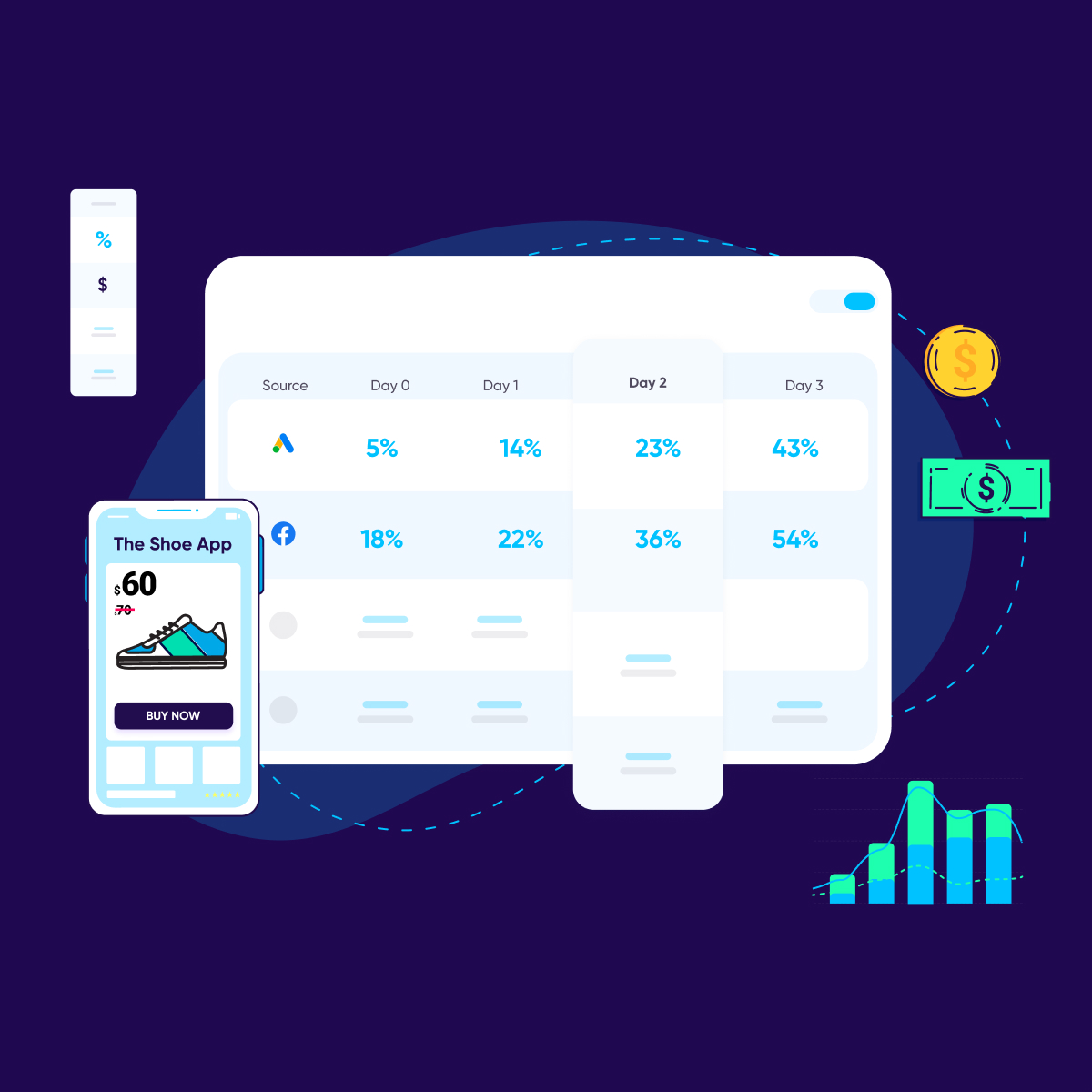
5 tips for measuring your mobile ROI

The one question every business must weigh up when investing in advertising is: what do I get out of it? And from there we can ask ourselves, is it worth it? And is it possible to get even more value from our marketing efforts, and if so, how to go about it?
The key to answering all of these questions is the ability to measure the return on investment (ROI) in your advertising spend (also known as ROAS – return on advertising spend). In this article, we’ll give our top tips for measuring your own mobile marketing ROI, and show just how important accuracy is to achieving profitable returns.
1. Understand your costs and revenues
It goes without saying that marketing comes at a cost – the investment upon which you are aiming to generate maximum return. But having a full understanding of all the fees and outgoings is vital to determining your ROI. For example, if your marketing efforts involve third party agencies or tools, there are likely to be some fees and costs that need to be factored into your overall numbers.
It is also necessary of course to have a full understanding of your revenue streams. The app ecosystem is freemium-driven, and free-to-install apps make money through a range of methods.
In-app purchases (IAPs) allow users to purchase virtual or real-world items in the app, while in-app advertising (IAA) drives revenue from the vast majority of users who do not make an IAP. App subscriptions, such as streaming services or dating apps, generate revenue on a recurring basis. Finally, a section of the app market remains paid-for, with an up-front fee to download and use the app.
Finally, remember to weigh up the balance of cost vs quality. Targeting high-value markets and users comes at a cost, but can generate more revenue. On the other hand, running campaigns in low revenue markets can also be valuable in its own right if the cost of those campaigns is low.
2. Recognize the risk with your data
The first step to solving a problem is acknowledging that the problem exists. ROI is a seemingly simple metric that can be surprisingly elusive – if your ROI data is wrong or incomplete.
One of the worst outcomes for marketers is not even realizing that their data inputs are inaccurate. This is a genuine danger when it comes to mobile marketing: no matter how sophisticated your Business Intelligence team, they may be making poor decisions without realizing it due to fraud or misattribution of their data.
Data accuracy is crucial. “Garbage in, garbage out” is an old adage for anyone looking to make data-driven decisions: if your input is wrong or flawed, your output will suffer as a result. The lasting consequences of this can completely derail any marketing efforts, and with it your app’s performance and your ability to make smart, informed decisions.
Recognising any flaws in your data, or whether it is inaccurate or incomplete, won’t just boost your decision-making ability. It will also drive down wasted spend in your marketing, in turn amplifying your ROI.
Mobile measurement partners (MMPs) have deep integrations with the majority of media sources and marketing platforms, making it easy to attribute every install to its source. The robust nature of an MMP platform can greatly enhance your data accuracy, giving you complete trust in your data inputs.
3. Own the data management flow
Advertisers need to have complete control of all their cost data – and relying on an array of other networks, partners or channels to pass data regularly, quickly and securely is nearly impossible in today’s market.
Having the ability to receive data without a lag, and in a consistent format, is vital to making critical decisions. Application program interfaces (APIs) that connect directly with a network are one method for ensuring data is accurate and constantly updated in near real-time. Another method is ingestion, which allows advertisers to upload ad spend data from any source, before the attribution provider then standardizes it.
When the data management flow is fully controlled by the advertiser, numbers will be accurate and instantly-updated, and help give you a true reflection of your ROI.
4. Strive for data standardization
One of the challenges with measuring mobile ROI is the range of inputs and variables that form the data from different cost sources. There is rarely a consistent level of granularity and frequency in the ways different sources report data, with each network having different metrics associated with costs.
For example, Twitter reports on tweets, Facebook has page likes, and Snapchat has swipe-ups. This leads to fragmented cost data which – at best – slows down business analytics. At its worst, we’re back to the “garbage in” situation described earlier.
This is where data standardization has a huge role to play. Marketers must make sure that data sent by ad networks is aligned with their analytics needs. This can be achieved through a consistent, well-defined data structure in naming conventions and macro-parameter matches.
5. Ensure accurate attribution data
Last but not least, accurate attribution data is at the heart of mobile ROI measurement. It’s a technological solution designed to keep data accurate and clean of fraud. When attribution data is wrong or inaccurate, the entire building collapses, and with it any possibility of accurate cost and revenue data.
A high-quality attribution platform brings together connections with thousands of partners, from media companies to analytics platforms. It also has the infrastructure to scale up and down as a marketer’s needs require, without any drop-off in the accuracy and efficiency of the attribution itself.
An attribution platform requires a lot of technological expertise and experience to build – but provides immense value when it comes to accurately measuring ROI. It gives you complete control of your cost data, and empowers you to make fast, critical decisions while reducing the risk of mistakes.
Conclusion
Measuring your mobile ROI is a complex, ever-shifting challenge with a huge range of variables to measure and optimize in near real-time. Marketers need to plan for what to measure, and also recognize limitations in their own data.
Ensuring accurate attribution data is crucial and can be handled by platforms like MMPs.
MMPs and their products can overcome many of the challenges presented above, at a scale to suit any business. Discover more about understanding your true mobile ROI, and the importance of getting a complete view of your marketing spend, with AppsFlyer.




